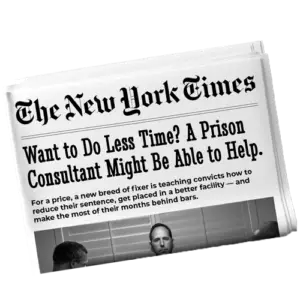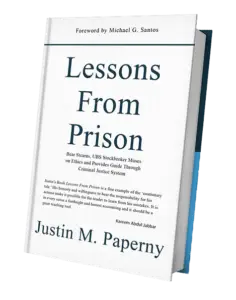Sometimes, but not always. Placement depends on your sentence length, background, and behavior. Most white collar defendants are placed in minimum-security prison camps.
These camps are not the violent prisons you see on television. But they carry risks of their own—mainly wasted time, isolation from family, and the long-term stigma that follows you home.
What Is a Minimum-Security Prison Camp?
According to the Bureau of Prisons (BOP) Program Statement 5100.08: Inmate Security Designation and Custody Classification Manual, a federal prison camp is designed for inmates with the lowest custody scores.
Here’s what defines them:
- No fences or barbed wire – Camps have no perimeter fencing. Walking away is considered escape.
- Dormitory housing – Open bays with bunks instead of locked cells.
- Recreational programs – Pickleball, tennis, running tracks, weight areas.
- Work details – Food service, groundskeeping, warehouse jobs, clerical support.
- Staff oversight – Limited direct supervision compared to low or medium-security prisons.
These facilities are where most first-time, non-violent offenders serve sentences.
When White Collar Defendants End Up in Dangerous Prisons
Not every white collar defendant qualifies for a camp. The BOP uses a scoring system to classify prisoners, as outlined in Program Statement 5100.08.
Here are factors that can push someone out of a camp and into a more dangerous facility:
- Sentence length – Sentences over 10 years usually exceed the scoring threshold for camp placement.
- Criminal history – Prior convictions add points to your custody score, moving you into higher security.
- Detainers – If another jurisdiction has pending charges against you, you’re ineligible for camp.
- Behavior – Substance abuse, violence, or misconduct before or during custody increases risk classification.
The difference between a camp and a low-security prison is significant. At a low, you’ll encounter locked perimeters, higher staff-to-inmate ratios, and a greater mix of offenders—including some convicted of violent crimes.
Case Example: Disney Resort vs. Prison Camp Behavior
At Disney, I once saw a man cut in line for a Mickey Mouse photo with his daughter. He said he had a plane to catch. A fight nearly broke out.
Inside a prison camp, the same behavior—ignoring rules, cutting ahead, acting entitled—creates problems.
Most white collar defendants in camps don’t face physical danger unless they provoke it. The unspoken rule is simple: follow the rules, respect the line, don’t act like your time is more important than someone else’s.
The Hidden Risk: Wasting Your Sentence
The biggest risk in camps isn’t violence—it’s wasting time.
- Groundhog Day routine – The same cycle of meals, counts, and television.
- Victim mentality – Complaining about injustice instead of preparing for release.
- Fear of release – Many finish sentences unprepared for probation, work restrictions, and family strain.
I’ve seen defendants spend years in camp with no plan. By the time they leave, they’re more anxious about going home than they were about surrendering.
Q&A: White Collar Defendants and Prison Placement
Q: Do all white collar criminals go to camps?
No. BOP custody scoring decides placement. Long sentences, prior convictions, or detainers can move you to a low or medium-security prison.
Q: Are minimum-security camps violent?
Rarely. They are non-secure facilities with little history of violence compared to higher-security prisons.
Q: What role does a judge play in placement?
Judges can recommend placement in a camp. The BOP considers recommendations, but Program Statement 5100.08 makes the final decision based on scoring.
Steps to Strengthen Your Case Before Prison
If you’re under investigation or awaiting sentencing, your preparation can influence prison placement:
- Request camp designation at sentencing – Have your lawyer ask the judge to recommend it. Judges’ recommendations carry weight with the BOP.
- Understand the scoring system – Learn how your sentence length, history, and behavior impact your classification under BOP Program Statement 5100.08.
Build a release plan – Document rehabilitation and stability. Judges and probation officers consider this when recommending placement.
Do white collar criminals go to dangerous prisons? Some do. Most don’t. Where you serve depends on the BOP’s classification rules and what you do before sentencing.
Join our Tuesday webinar at 11AM Pacific / 2PM Eastern, or schedule a personal call to learn how prison placement decisions are made and how to prepare.
Justin Paperny
Director – White Collar Advice



